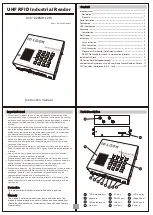
<P=004>
(Continued)
■
Types of discs
There are two types of discs: playback-only and recordable
type.
●
Playback-only MiniDisc:
This type of MiniDisc is used for commercially available
pre-recorded music. This is the same kind of optical disc
as CDs. Playback is performed using an optical pickup.
(Recording and editing are not possible.)
A Shutter will be used on
only one side (back).
●
Recordable MiniDisc:
This is a "raw disc" on which recording can be performed.
A magneto optical disc is used.
Recordings are made using a laser and magnetic field.
Repeated recording is possible.
Shutters will be used on
both sides.
■
How to apply labels
When sticking a label on an MD cartridge, be sure to ob-
serve the following. If a label is not affixed properly, an MD
may become jammed in the unit such that it can not be
removed.
●
Stick a label correctly to the specified area.
(Do not stick labels to areas other than the specified
one.)
●
Do not stick one label upon another.
●
If a label is peeling off or starts to come loose, replace
it with a new one.
■
High-speed access
A unique feature of the MiniDisc is the ability to locate the
beginning of a desired track at high speed.
This is because the track number and track name data is
stored in a TOC (Table of Contents).
Disc
TOC
Sound data
■
Shock Resistant Memory
During playback, approximately 10 seconds of information
is stored in the semiconductor memory. Therefore, even
when the pickup cannot read information for a second or
two due to an external shock, the sound continues without
interruption because the information stored in memory is out-
put.
MINIDISC SYSTEM LIMITATIONS
Even if the maximum recording time of a MiniDisc has
not been reached, "TOC FULL" may be displayed.
Even if the maximum recording time of a MiniDisc has
not been reached, "DISC FULL" may be displayed.
Even if several short tracks are erased, the remaining
recording time may not show an increase.
Two tracks may not be combined in editing.
The total of the recorded time and time remaining on
a disc may not add up to the maximum possible rec-
ording time.
If recorded tracks are fast reversed or fast forwarded,
the sound may skip.
In the MD system, the delimiter of the recording area on an
MD is programmed in a TOC. If partial erasing, recording and
editing are repeated several times, TOC information will fill up,
even though the number of tracks has not reached the limit
(255 tracks), and further recording will be impossible. (If you
use the all erase function, this MD can be used from the be-
ginning.)
If there is any flaw on the MiniDisc, that part is automatically
excluded from the space available for recording. Therefore, the
recording time becomes shorter.
When the remaining recording time of a disc is displayed, short
tracks less than 12 seconds long may not be included in the
total.
For MiniDiscs on which repeated recording and editing operations
were performed, the COMBINE function may not work.
A track recorded from a CD (digital recording) and a track re-
corded from a radio or other equipment (analogue recording)
cannot be combined.
A cluster (about 2 seconds) is normally the minimum unit of rec-
ording. So, even if a track is less than 2 seconds long, it will
use about 2 seconds of space on the disc. Therefore, the time
actually available for recording may be less than the remaining
time displayed.
If there are scratches on discs, those sections will be automat-
ically avoided (no recording will be placed in those sections).
Therefore, the recording time will be reduced.
An MD which was recorded or edited repeatedly may skip dur-
ing fast reverse or fast forward.
MD-ZV30H TINSZ0217AWZZ
E-39






































